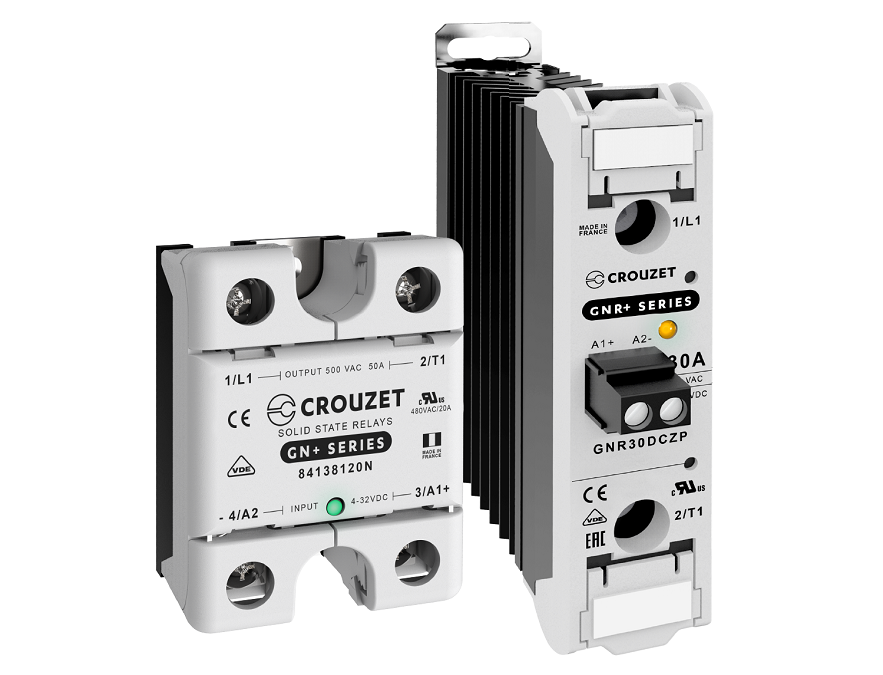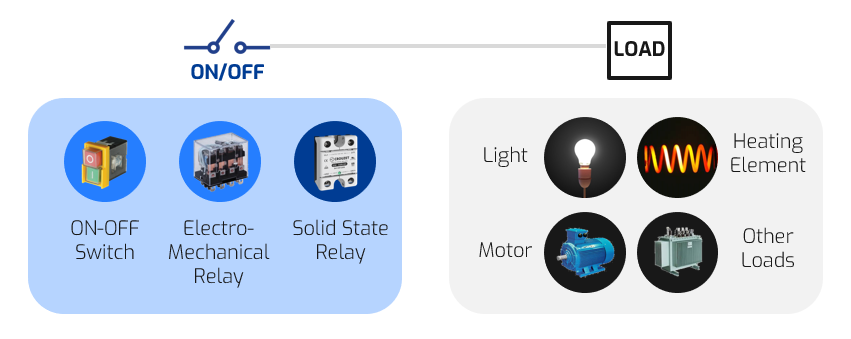WHAT IS A SOLID STATE RELAY?


The first solid state relays became available as standard components towards the end of the 1960’s. Today, the solid state relay is a perfect match to certain applications: soft start, reversing the direction of rotation, power proportioning.
Definition
A solid state relay is an electronic component which performs an interface function with electrical isolation between a control circuit, usually at low level, and a power circuit connected to loads which may have high power ratings (motors, pumps, solenoid valves, heaters, etc).
In other words, it is an electrical component used to switch on and off a load.

This function is performed in an entirely “static” fashion, with no moving parts, thus endowing the component with an almost unlimited lifetime.
Structure of a Solid State Relay
The solid state relay, also termed SSR, consists basically of 5 functions. This structure is technically equivalent to and comparable with that of an electro-mechanical relay (EMR).
- The Input Circuit
In an electro-mechanical relay, the input characteristics (voltage, current, level) are determined by the coil. Similarly, the SSR has a more or less complex input circuit. At the lower end of the range, it may consist of a simple serial resistor with its polarisation diode. More complex relays may have a circuit generating a constant current for extended input voltage ranges, or an analog-to-digital converter for analog relays.
- The Isolation
In an EMR, the electro-magnetic coupling between the moving armature and the coil naturally ensures the galvanic isolation. In the case of an SSR of the semiconductor type, this isolation is provided by optical coupling (phototransistor, phototriac…). On some older versions, isolation may be by magnetic coupling, or even a REED relay.
- The Trigger Circuit
This circuit processes the input signal received and switches the output circuit. Where the switching is complex (zero voltage switching, pulses, phase control …), this circuit guarantees the desired switching mode. In the case, for example, of zero voltage switching, the circuit will ensure that the output will only switch when the voltage next passes zero after application of the control input.
- The Switching Circuit
This circuit consists of an element providing for the electrical power to be switched to the load. This component may be either a bipolar transistor or a MOS transistor to switch a DC voltage to the load, or a triac or back-to-back SCRs to switch an AC supply.
In an electro-mechanical relays, the switching element is a simple contact capable of operating either in AC or DC mode. In a solid state relay, the output pre-determines the type of main supply switched.
- The Protection Circuit
With their totally electronic structure, SSRs are more sensitive to the interference present in the main AC supply than EMR. The switching circuit needs to be protected from the surges and interference in low voltage supplies. Now, the relay more and more often integrates itself such protection. Over-voltage protection is now standard.
Miniaturisation of electronic components has both improved the performance of these relays and made it possible to add complementary functions.
Typical Applications for Solid State Relays
Solid state relays have been used successfully for 20 years in a wide range of applications. Current experiences show that, although universal, SSRs particularly fit process applications where PLCs or other microcontroller-based circuits control machine tools.
Due to their very high input sensitivity (less than 15 mA for controlling up to 120 A) over a wide voltage range, solid state relays are directly compatible with most standards for electronic components such as CMOS, TTL, microprocessors, etc…
Potential uses include (non-exhaustive list):
Heating elements: Commercial food processing machines • Plastic injection molding / extrusion • Furnaces • HVAC • Textile • Residential heating • Infrared heating • Drying • Thermoforming • Soldering equipment
Motion: Pumps • Compressors • Conveyor systems • Fans • Elevators • Lifts • Hoists • Motorized exercise equipment
Lighting: Theaters • Municipalities • Cinemas and stages • Airport runways • Streets and roadways • Warehouses • Office spaces • Hazardous location and beacons
Miscellaneous: Power transformers • Electromagnets • Switching power supplies • Regulators • Inverters • Power converters • Uninterruptible power supplies • Power factor correction capacitors • Solenoid Valves • And more.
